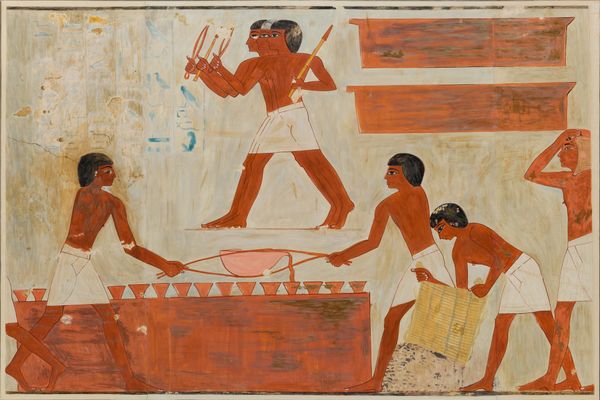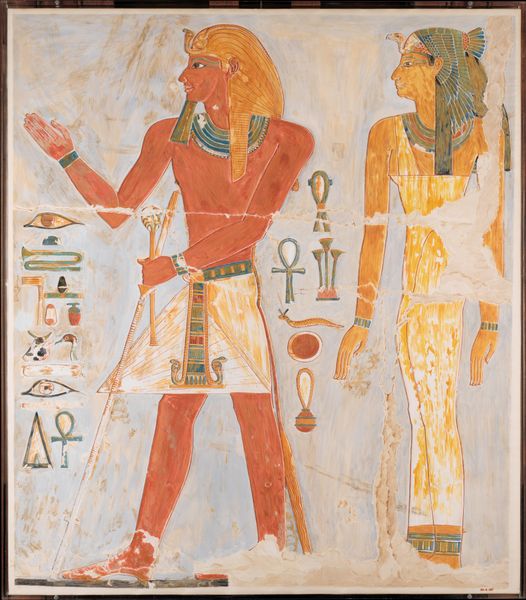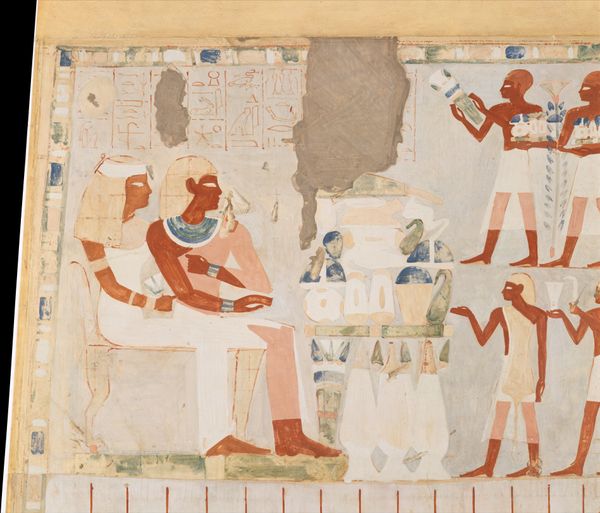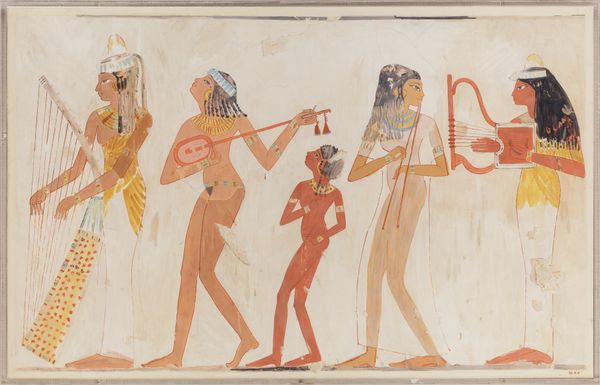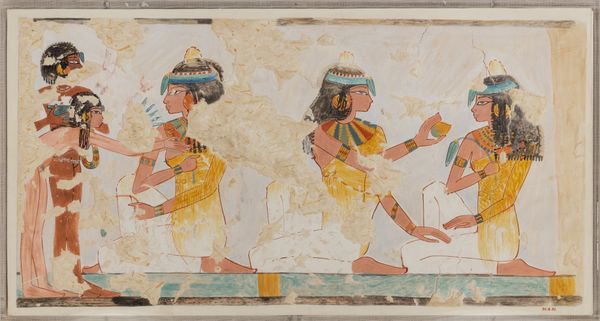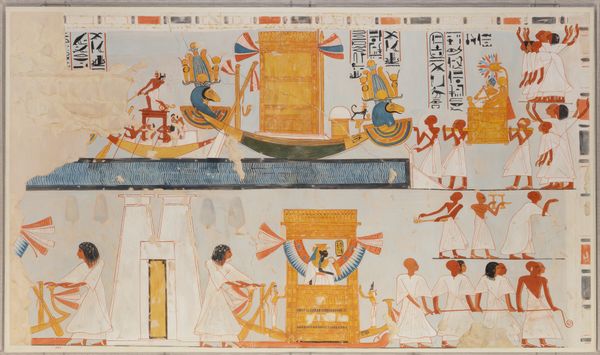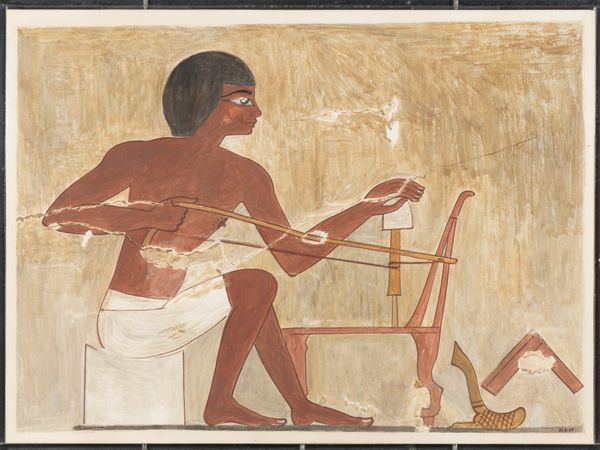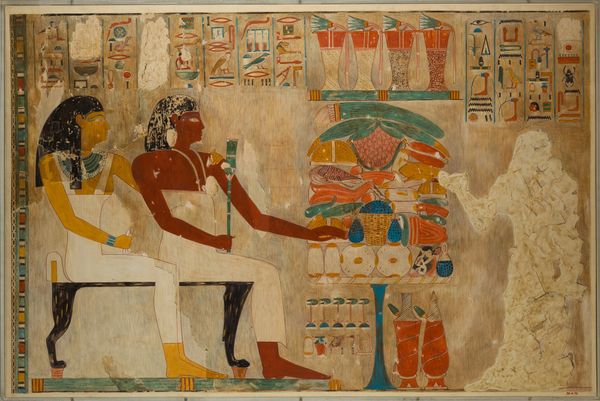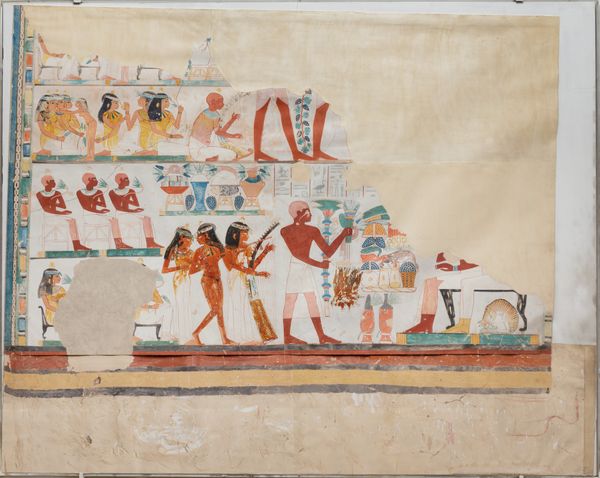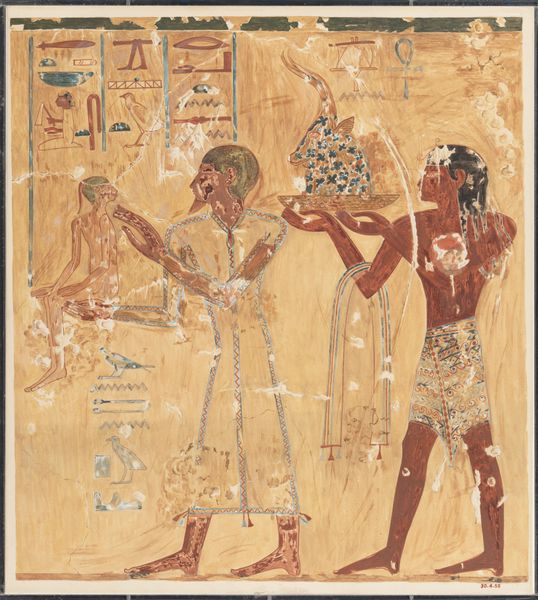
painting, watercolor
#
water colours
#
narrative-art
#
painting
#
ancient-egyptian-art
#
figuration
#
watercolor
#
egypt
#
ancient-mediterranean
#
history-painting
#
miniature
Dimensions: h. 17.4 cm (6 7/8 in); w. 93.7 cm (36 7/8 in) scale 1:2
Copyright: Public Domain
Curator: What strikes me about this painted limestone relief—"Lintel, Pyramid Temple of Amenemhat I" it's called, dating way back to 1981 BC—is its incredibly modern feel. It’s Egyptian art, yes, but it's the softness of the watercolors that pulls me in, the dreaminess of the composition, almost like looking at a mirage. Editor: Mirage is a great word. The fragmented figures—Horus, Anubis, the Pharaoh—suspended between image and hieroglyph certainly evoke the liminal spaces of power and belief. This wasn’t just art, but a carefully constructed system of signs meant to perpetuate Amenemhat's reign. How fascinating to contemplate this not as simply aesthetically pleasing but as a powerful cultural weapon. Curator: Weapon, eh? I like that turn of phrase! The meticulous rendering—a testament to its role in the Pyramid Temple, now at the Met— does create a very particular atmosphere. It almost feels devotional in its execution. I get this sense of timelessness staring at it, something about the muted color palette...It’s speaking across millennia. Editor: It’s fascinating to note the almost painterly approach to color considering its ritual context. Ancient Egyptian art— particularly in temple contexts—was so governed by convention that the use of watercolours appears almost rebellious! Was this the artist quietly resisting the oppressive status quo, or experimenting in defiance of traditional methods? It's an idea. Curator: Oh, I love picturing some rogue artist! But it might have just been cheaper—who knows the mundane practicalities behind these choices? Maybe that very softness lends itself better to projecting power, though. What I can't stop considering is that it's just this little slice of life – a doorway. Editor: Precisely! Art history must continue interrogating the role of such objects— the politics behind its commissioning, the economics driving materials. Even a “mirage” carries the heavy weight of empire. These doorways can also represent who and what get left outside. Curator: Absolutely. I feel like I'm constantly opening doors when I view art: what did they eat, how did they think... what did they fear? In this piece it really pushes the human, it lets us breathe alongside pharaohs. Editor: In breathing alongside them we must not forget all who were denied that breath! It is a portal for contemplation and further questioning of power, history, and representation.
Comments
No comments
Be the first to comment and join the conversation on the ultimate creative platform.
